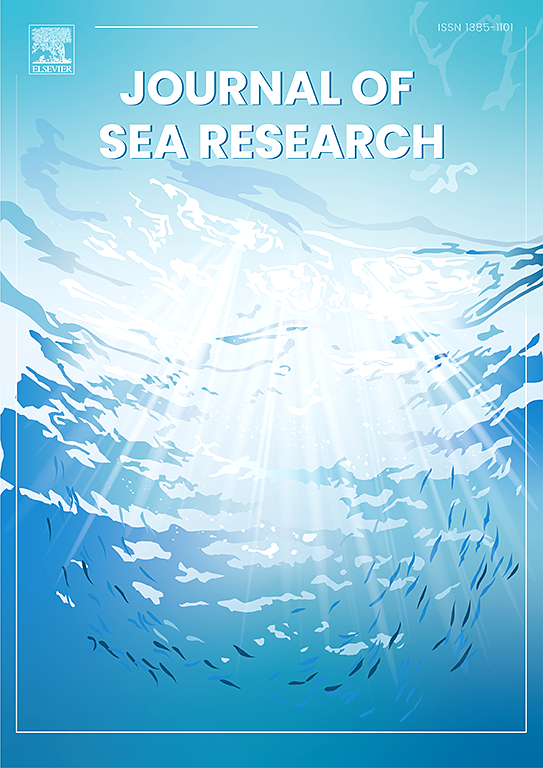Macrozooplankton diversity and distribution off South Orkney Islands
IF 2.9
4区 地球科学
Q2 MARINE & FRESHWATER BIOLOGY
引用次数: 0
Abstract
Zooplankton organisms are considered ecological bio-indicators used to monitor the sustainability and health of marine ecosystems. Climate monitoring shows that the western part of the Atlantic sector of the Southern Ocean is undergoing warming over the second half of the twentieth century. This study describes the macrozooplankton composition in the upper 200 m water column of the South Orkney Islands shelf, slope, and offshore areas during the austral summer of February 2016. In total, 24 taxa were identified (15 determined to species level) from 22 sampling stations. The dominating species in catch weight were Euphausia superba (43.4 %) and Salpa thompsoni (42.7 %). Lower species diversity was associated with the offshore stations while higher species diversity was found on the shelf and slope areas. Spatial distribution of biota was examined in relation to temperature, salinity, bathymetry, and surface chlorophyll a using a non-metric multidimensional scaling (NMDS) analysis. A hierarchical clustering revealed five distinct groups: two dominated by S. thompsoni, linked to offshore waters, two groups with mixed characteristics, greater diversity and located over the shelf and slope, and a group dominated by E. superba. This study establishes a baseline for long-term monitoring of macrozooplankton at the South Orkney Islands, aiding future assessments of species composition and distribution in response to environmental change.
南奥克尼群岛大型浮游动物的多样性和分布
浮游动物生物被认为是用于监测海洋生态系统的可持续性和健康的生态生物指标。气候监测显示,在20世纪下半叶,南大洋大西洋部分的西部正在变暖。本研究描述了2016年2月南部夏季南奥克尼群岛大陆架、斜坡和近海区域200米以上水柱的大型浮游动物组成。22个采样点共鉴定出24个分类群(15个已确定为种级)。渔获量占总渔获量的优势种分别为大鳞金蚤(43.4%)和汤普森萨尔帕(42.7%)。近海站区物种多样性较低,陆架和坡区物种多样性较高。利用非度量多维尺度(NMDS)分析了生物区系的空间分布与温度、盐度、水深和表面叶绿素a的关系。分层聚类结果显示出5个不同的类群:两个类群以S. thompsoni为主,与近海水域有联系;两个类群具有混合特征,多样性较大,位于陆架和斜坡上;一个类群以E. superba为主。本研究为南奥克尼群岛大型浮游动物的长期监测建立了基线,有助于未来评估物种组成和分布对环境变化的响应。
本文章由计算机程序翻译,如有差异,请以英文原文为准。
求助全文
约1分钟内获得全文
求助全文
来源期刊

Journal of Sea Research
地学-海洋学
CiteScore
3.20
自引率
5.00%
发文量
86
审稿时长
6-12 weeks
期刊介绍:
The Journal of Sea Research is an international and multidisciplinary periodical on marine research, with an emphasis on the functioning of marine ecosystems in coastal and shelf seas, including intertidal, estuarine and brackish environments. As several subdisciplines add to this aim, manuscripts are welcome from the fields of marine biology, marine chemistry, marine sedimentology and physical oceanography, provided they add to the understanding of ecosystem processes.
 求助内容:
求助内容: 应助结果提醒方式:
应助结果提醒方式:


